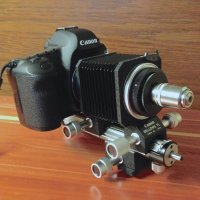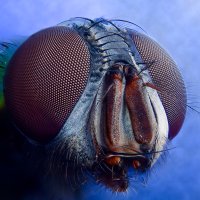I wonder how many MP-E 65 users actually use it primarily in the field? I don't think it was really designed as a field lens, it really is far more at home clamped to a serious tripod at home. Once you get down to 5x you're pretty much required to stick to f/2.8 because of diffraction which means your depth of field almost doesn't exist, so unless you're shooting perfectly flat things you absolutely need to stack, and that's no fun out in the field
I primarily use it outside, in the 1x-2.5x range, so diffraction isn't an unsurmountable problem. As for tripods, I don't like them for the MP-E when I don't focus stack. When chasing creatures I often have to poke the lens inside a plant or bush, getting such an angle with a tripod would be impossible.
Upvote
0


